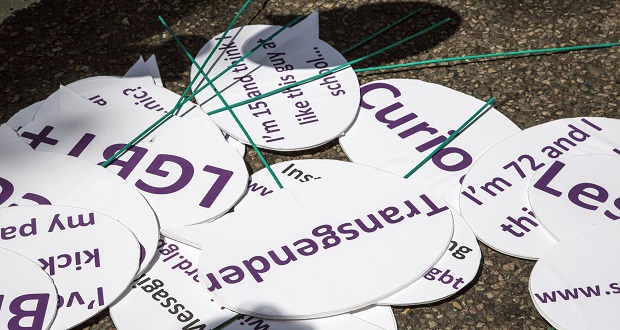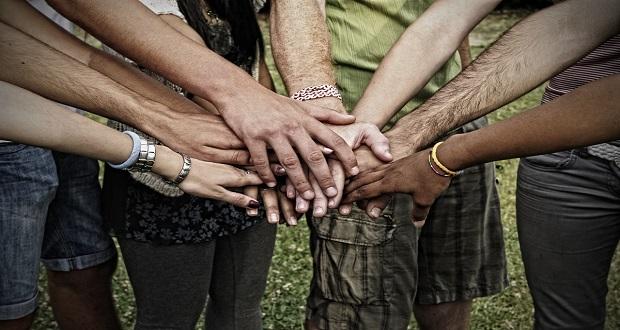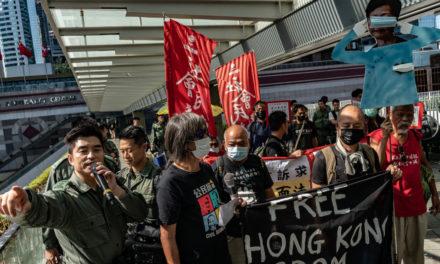
For the past 6 weeks, we have been exploring identity development for different groups. This week our focus is on transgender identity development. Identity development is complex for those of us who are historically in a non-dominant or “minority” status and particularly complex for those who identify as LGBT. Last week I attempted to highlight some models for LGBT identity development and realized that it was not such an easy task. Identity development is different for LG than it is for bisexual individuals and certainly not the same for the transgender community. Interestingly and perhaps not surprising, of all of the theoretical models for identity development, transgender scholars propose the most stages, acknowledging the extraordinary difficulty for this community.
Aaron Devor, Dean of Graduate Studies ad Professor of Sociology at the University of Victoria, Canada, posits that there are 14 possible stages that involve exploration and analysis both at an interpersonal and intrapersonal level over the course of many years.
Stage 1 – Anxiety: Marked by a sense of constant anxiety about one’s gender and sex. The sense of not feeling right about one’s social role (gender) or body might be able to be traced back to early childhood.
Stage 2 – Identity confusion: The first doubts about originally assigned gender and sex occur at this stage. The feeling that one does not fit well with others of their gender leads to questioning whether they are in the right assigned sex. Children may become completely convinced that they are in the wrong gender and sex and voice to others that they are member of the other sex. Adults in their life will do everything to tell them otherwise and thus the confusion.
Stage 3 – Identity comparisons: One seeks to understand alternative gender identities at this stage. There is an acceptance of the fact that the physical sex of their body has dictated their gender status and they attempt to find ways to successfully navigate between social expectations and their need to for self-expression.
Stage 4 – Discovery of transgenderism: At some point the individual will learn that transgenderism exists. This can happen at an early age but for most people it happens later in their lives after many years of living with the constant anxiety. Most transgendered individuals will recall this stage as a significant event in their lives.
Stage 5 – Identity confusion about own transgenderism: This stage is marked by doubts of the possibility of their own transgenderism. Individuals will begin to look for additional information on what it really means to be transgendered.
Stage 6 – Identity comparisons: The focus at this stage is to compare oneself to other transgendered people to try to come to a more definitive conclusion about their own gender identity.
Stage 7 – Tolerance for own transgender identity: At this stage one identifies as ‘probably” transgender. For some people the stages of identity comparison and tolerance are short and overlap. However for most it is a more gradual process of coming to terms with the enormity of the realization that “I am probably transgender”.
Stage 8 – Delay before acceptance: At this stage individuals seek more information about transgenderism; looking for confirmation of their transgender identity. They will look for others with whom they are close who are not transgender to validate and accept them and for those who are transgender to confirm, “you are one of us”.
Stage 9 –Acceptance: At this stage one’s transgender identity is firmly established and may tell others at this juncture. This marks another beginning because at this point individuals have worked through enough of their emotional anxieties that they are able to say to themselves and others, “I am transgender’.
Stage 10 – Delay before transition: This stage involves learning how to transition and organizing support systems. Few people at this stage know exactly what to do to transition. There are many personal and practical decisions that must be considered at this stage.
Stage 11 – Transition: The decision is made for gender and sex reassignment and it is actualized. This stage may include changes in social presentation of self, psychotherapy, hormonal treatments and a variety of surgeries.
Stage 12 – Acceptance of post transition identity: Successful post transition living is what is accomplished at this stage. At first living as their reassigned gender may seem somewhat artificial even to themselves. They may feel that their newly assigned gender is easily challengeable by others due to the recentness or the stage of their physical transitions.
Stage 13 – Integration: Transgender identity is mostly invisible and the individual has seamlessly integrated into society at large at this stage.
Stage 14 – Pride: This stage is marked by a personal sense of pride and taking a political stance to support others who may be wrestling with their own gender identity. This may also include being active in educating the public.
As these stages reveal, the process for self-actualization for the transgendered community is complex and involves many intricate steps of emotional and physical change. While every transgendered person does not necessarily go through each of these stages, I thought that this model offered a glimpse of what the transition might entail.



















Hello, Thank you for this interesting perspective. I don’t know if you created these 14 stages, but I feel compelled to express, as a trans and genderqueer person, that not all trans people decide to undergo hormonal or other medical changes. This was briefly implied at the end, but since it was not explicit, this article reads as erasing this diversity of transgender experience, especially non-binary trans people, cross-dressers, and other trans people who do not “transition” or who’s transition looks different. Please consider adding a more robust note to clarify this. Thank you.
Hi, Thank you so much for sharing this feedback. We certainly appreciate you sharing how you received this post. The 14 stages are not ours. I am noticing that the hyperlink in the original post is no longer active. Here is the original study: https://onlineacademiccommunity.uvic.ca/ahdevor/wp-content/uploads/sites/2247/2017/07/the-sage-encyclopedia-of-psychology-and-gender_i17126.pdf
We agree that the transgender experience is diverse, and it is never our intent to erase or marginalize those experiences. We will certainly be more cognizant of this in the future.
On another note, we always welcome contributing authors to share their perspectives. The main goal of the Inclusion Solution is to amplify a diverse range of voices and experiences. Let me know if this is something you might be interested in.